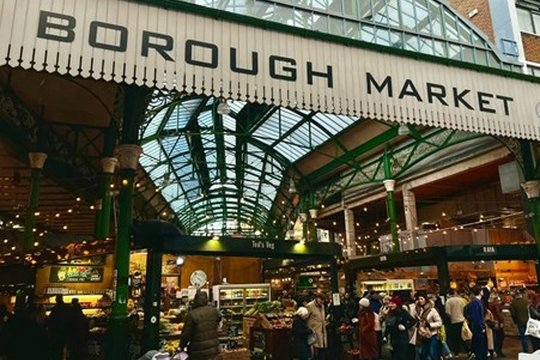Leasehold and freehold arrangements have historical roots, with the modern leasehold system started in the 1920s in the UK. Leasehold was introduced as a way for landowners to grant temporary use of their land in exchange for rent. Freehold, on the other hand, represents absolute ownership, providing stability and permanence.
Today, leasehold means you have the right to occupy a property, but you don't own the land. Freehold means you own both the property and the land it sits on outright.
Over time, these concepts evolved to meet changing property needs, which is what we will cover in this guide.
Understanding Leasehold Property
In the UK, a leasehold arrangement allows you to live in a property for a set duration outlined in the lease agreement. In a leasehold, you don't own the land the property stands on. Typically, leaseholders pay ground rent to the freeholder, who is the owner of the land. The lease may also impose specific conditions that leaseholders must follow. Once the lease term ends, ownership of the property reverts to the freeholder. While extensions or renewals are possible, they often involve additional expenses.
Rights and Responsibilities of Leasehold Property Owners
In a leasehold arrangement in the UK, leasehold property owners have rights and responsibilities that shape their tenure.
Rights:
Leaseholders have a right to occupy their property based on the terms of the lease agreement. Leaseholders are also entitled to receive all information about service charges and any significant works planned for the property. Leaseholders can extend their lease, subject to specific conditions. This often incurs an additional fee.
Responsibilities:
Leasehold property owners have specific responsibilities that are set out in the lease. One of the most important is ensuring payments are made on time, including ground rent charges, service fees, and any other costs specified.
Understanding Freehold Property Ownership
Freehold ownership in the UK means you own the property and the land it occupies indefinitely. Freeholders have complete autonomy over their property and can make modifications and decisions without seeking approval from a landlord.
Many people think a freehold lease is preferential; however, they do have pros and cons:
Advantages of Freehold Property:
- Unrestricted Ownership: Freehold property offers a sense of security as owners have full and permanent control over their property and the land.
- Flexibility and Control: Freeholders have the flexibility to make changes to their property without the need to seek permission.
- No Ground Rent Obligation: Unlike leasehold properties, freehold owners do not pay ground rent, reducing ongoing financial commitments.
- Potential for Long-Term Value: Freehold properties often have better potential for long-term value appreciation compared to leasehold properties.
Disadvantages of Freehold Property:
- Financial Responsibility: Freehold property owners are responsible for all property maintenance and repairs, which can be a significant ongoing cost.
- Potential Selling Challenges: Selling a freehold property might take longer, as potential buyers may face higher upfront costs compared to leasehold properties.
- Legal Responsibilities: Freeholders must navigate legal responsibilities, including adherence to local planning regulations and other legal aspects related to property ownership.
Common Leasehold Agreements
In the UK, leasehold lengths can vary, and they typically fall into three main categories:
- Short Leases (e.g., 99-year lease): These leases provide the right to occupy a property for a specific period, often 99 years. However, as the lease approaches its end, the property's value may be affected, remortgaging can become more difficult, and lease extension costs could arise.
- Medium-Length Leases: Lease terms falling between short and long leases, such as 125 or 150 years, offer a balance between initial affordability and a relatively extended period of ownership.
- Long Leases (e.g., 999-year lease): Long leases provide a significantly extended period of ownership, often approaching or practically indefinite. Properties with long leases tend to maintain their value well over time.
Right to Buy the Freehold
The Leasehold Reform, Housing, and Urban Development Act 1993-gives leasehold property owners additional rights to extend the lease or purchasing the freehold. The legislation gives qualifying leasehold owners the right of first refusal when their landlord intends to sell the freehold. It also includes an option to extend the lease by 90 years with an additional, nominal peppercorn ground rent. The process involves serving a Section 42 Notice to the freeholder.
Similarly, Collective enfranchisement allows leaseholders in a block of flats to jointly purchase the freehold, as governed by the Leasehold Reform, Housing, and Urban Development Act 1993.
The Future of Leaseholds and Reform
The future of leaseholds in the UK is shifting towards significantly reduced usage and increased rights for existing leaseholders. This change is driven by recent legislation and ongoing reforms aimed at creating a fairer and more transparent housing system.
The Leasehold Reform (Ground Rent) Act 2022 eliminated ground rents for most new houses and flats, reducing developers' motivation to use leasehold structures. The proposed Leasehold and Freehold Reform Bill aims to ban the sale of new leasehold houses, pushing for freehold ownership as the standard for new homes to give buyers more control.
Existing leaseholders will also benefit from increased rights and protections. The aforementioned Leasehold and Freehold Reform Bill proposes several changes to benefit them. These include:
- Making it cheaper and easier to extend leases by offering a standard term of 990 years with a ground rent reduced to zero.
- Removing the two-year wait period before leaseholders can exercise their right to extend their lease or buy the freehold collectively.
- Increasing the threshold for collective enfranchisement from 25% to 50% of commercial space, allowing more leaseholders to participate.
The government is also considering further reforms to address existing challenges, including:
- Restricting ground rents for existing leaseholders, potentially through a cap on the amount that can be charged.
- Reducing excessive service charges and improving clarity in how estates are managed.
Leasehold and Freehold Property in London
We're seeing less leaseholds in the London property market and more focus on protecting existing leaseholders. In the future, Londoners can expect to see fewer new leasehold properties due to the ban on ground rents and potential ban on new leasehold houses. Additionally, existing leaseholders will have more rights and protections, including easier and cheaper lease extensions and collective enfranchisement.
The Impact on Landlords and Property Investors
While the recent leasehold reforms are primarily aimed at benefiting leaseholders who own their homes, there are some potential indirect positive impacts for landlords and property investors.
The reforms aim to make lease agreements clearer, helping to prevent conflicts between leaseholders and landlords.
The emphasis on transparency and clarity in service charges could also simplify property management for landlords. Knowing the exact breakdown of charges and being able to justify them to leaseholders can help maintain positive relationships and avoid potential conflicts.
Contact our London property specialists to find your ideal property.




